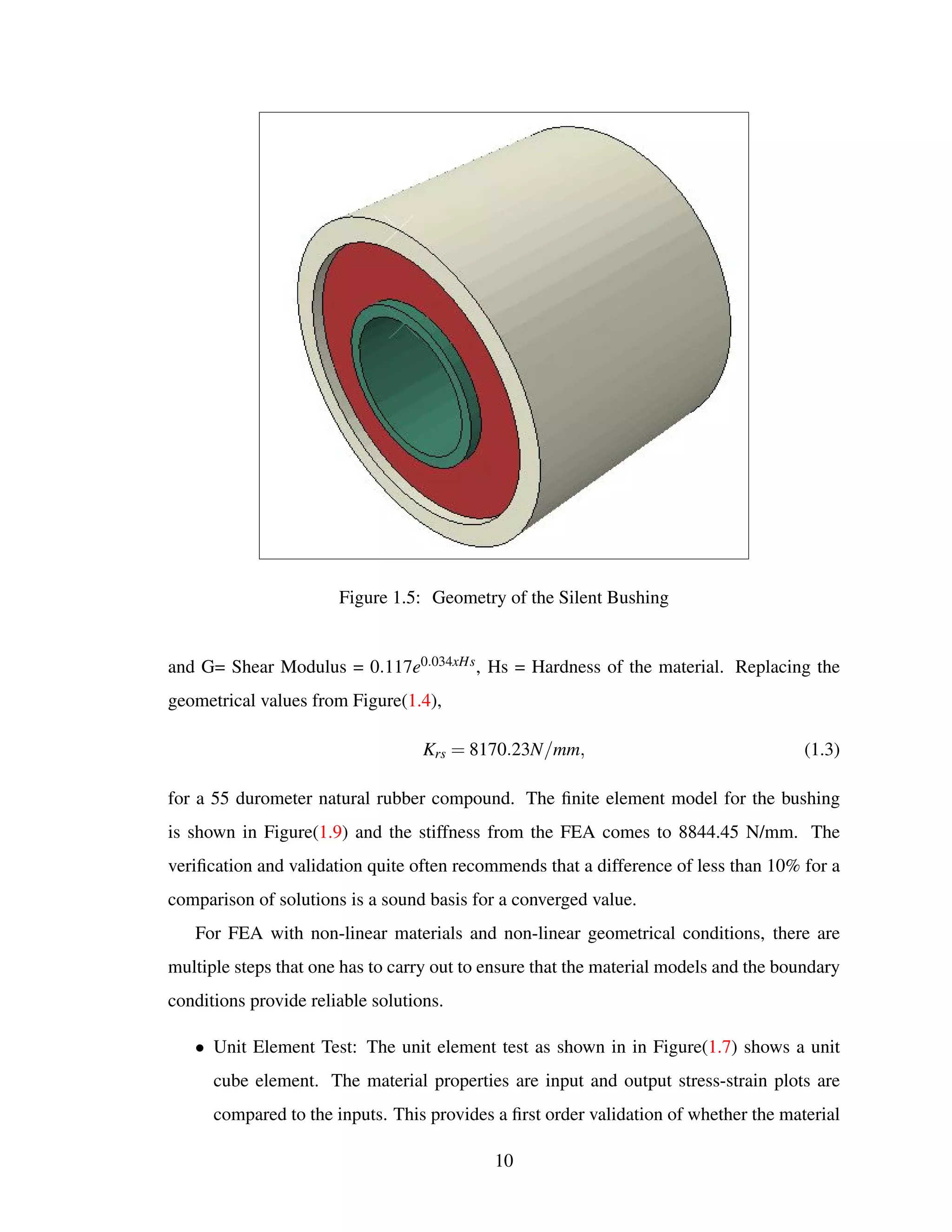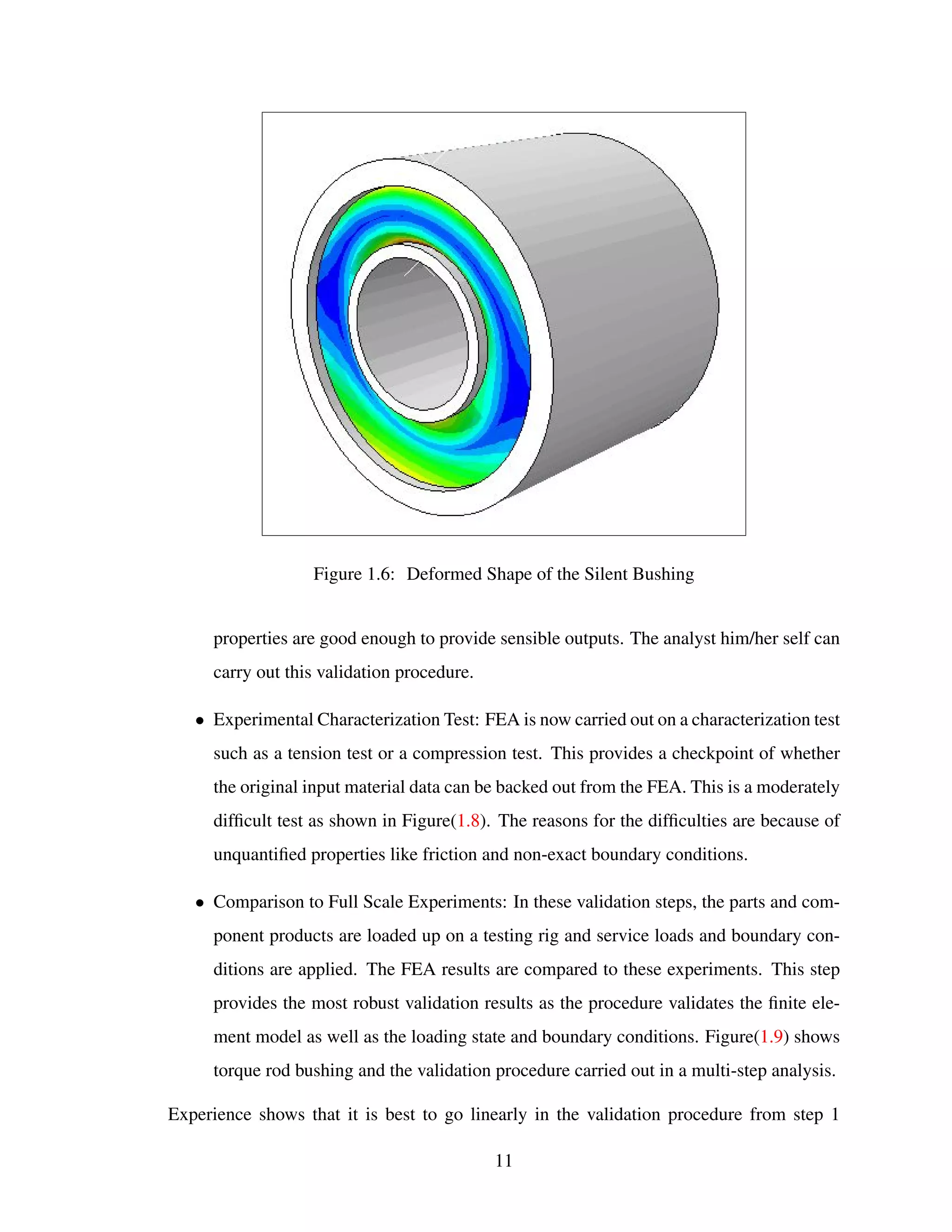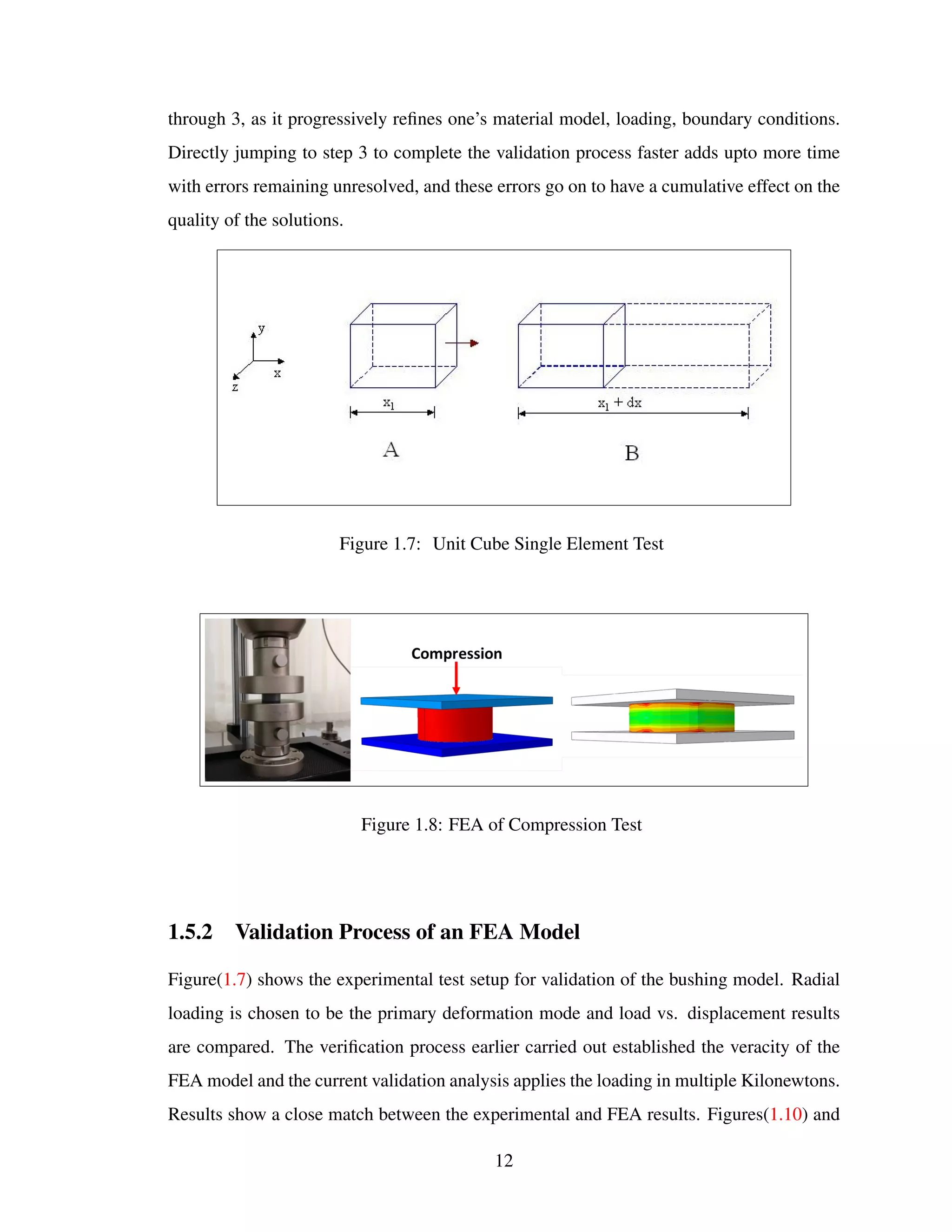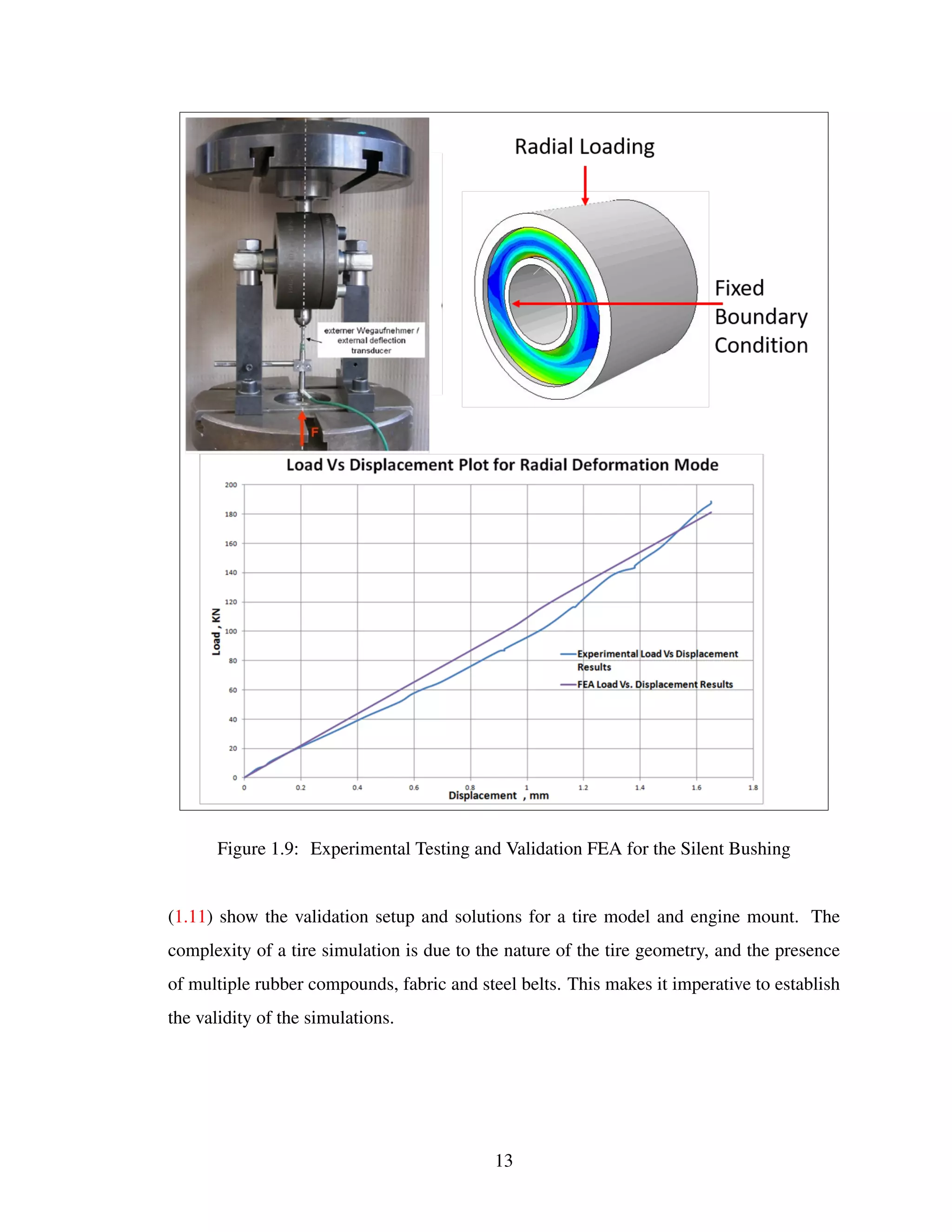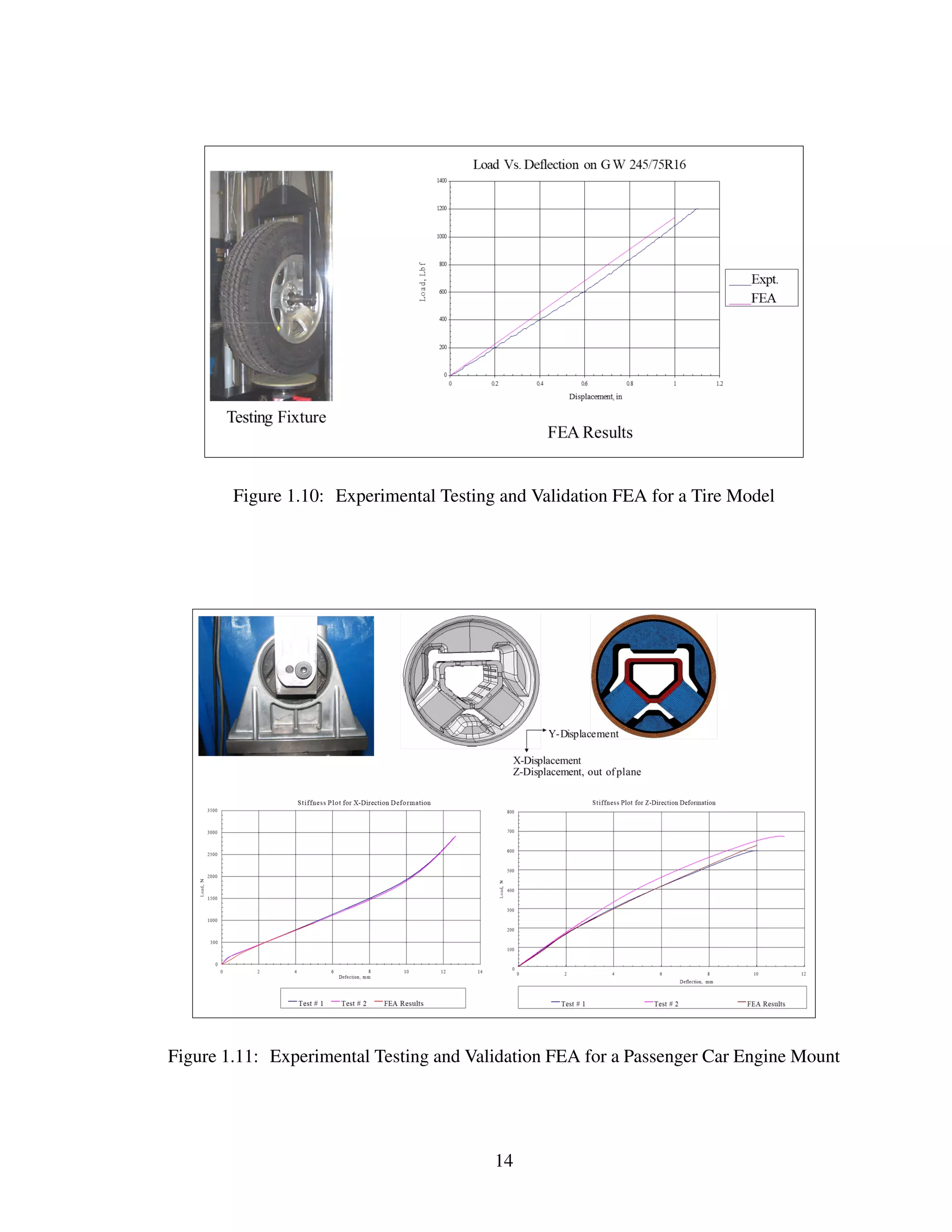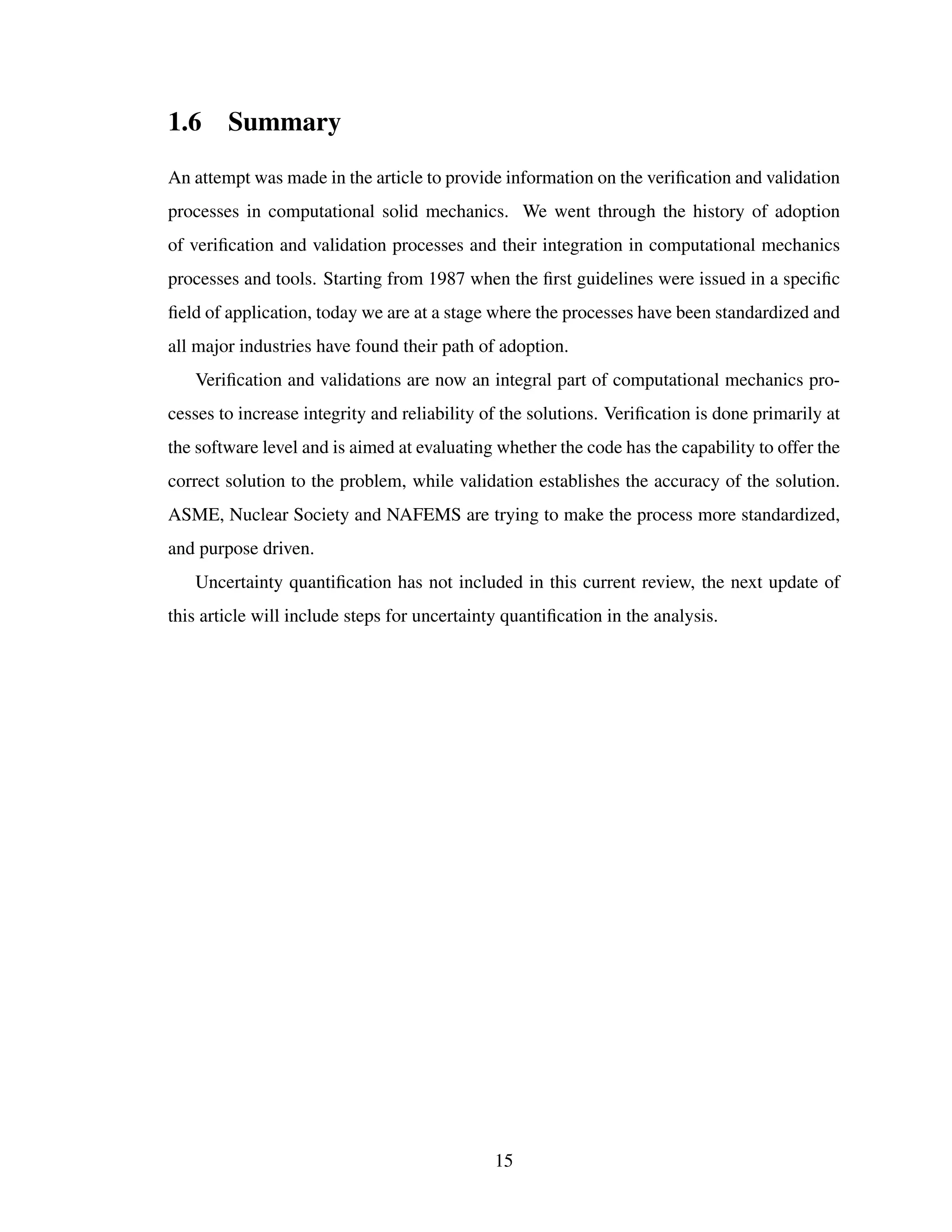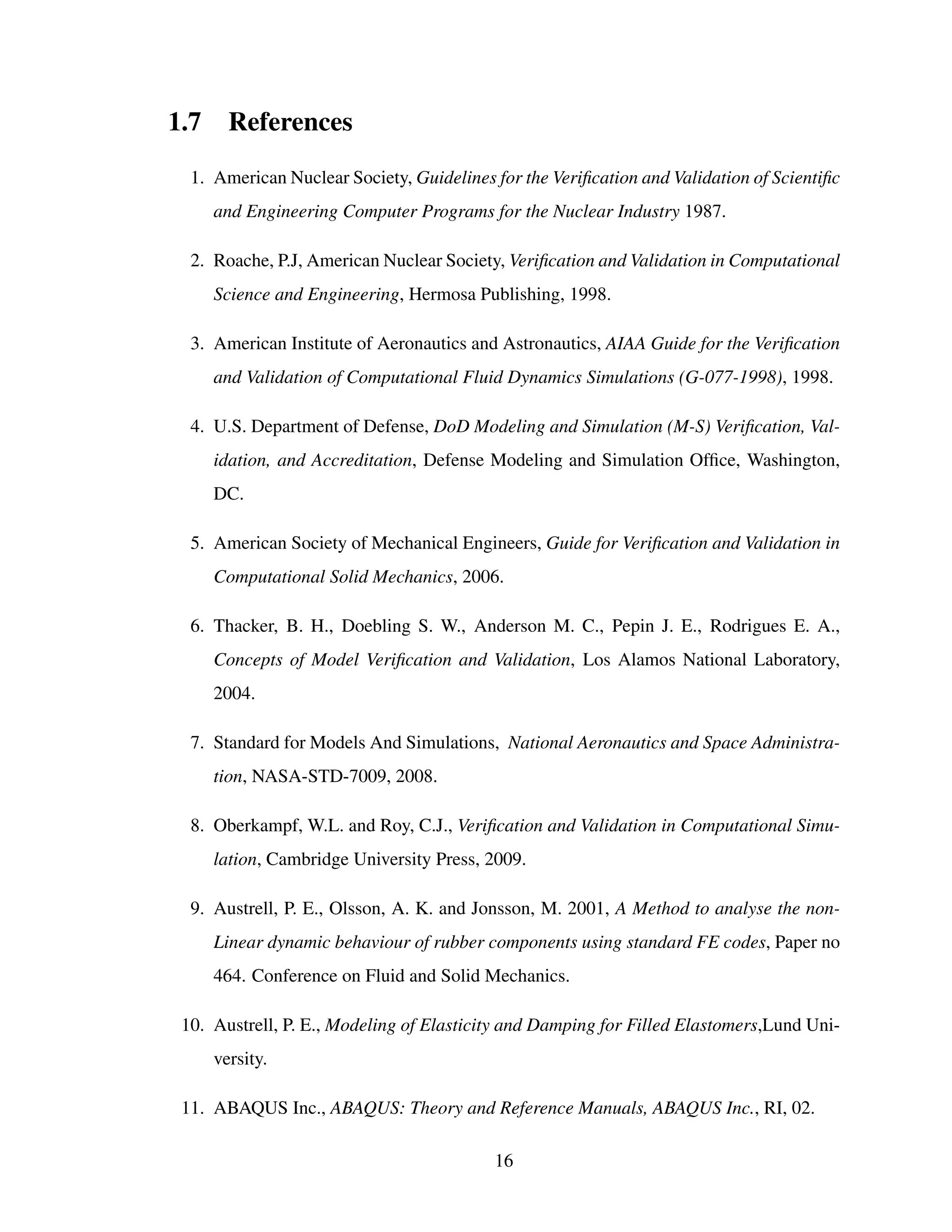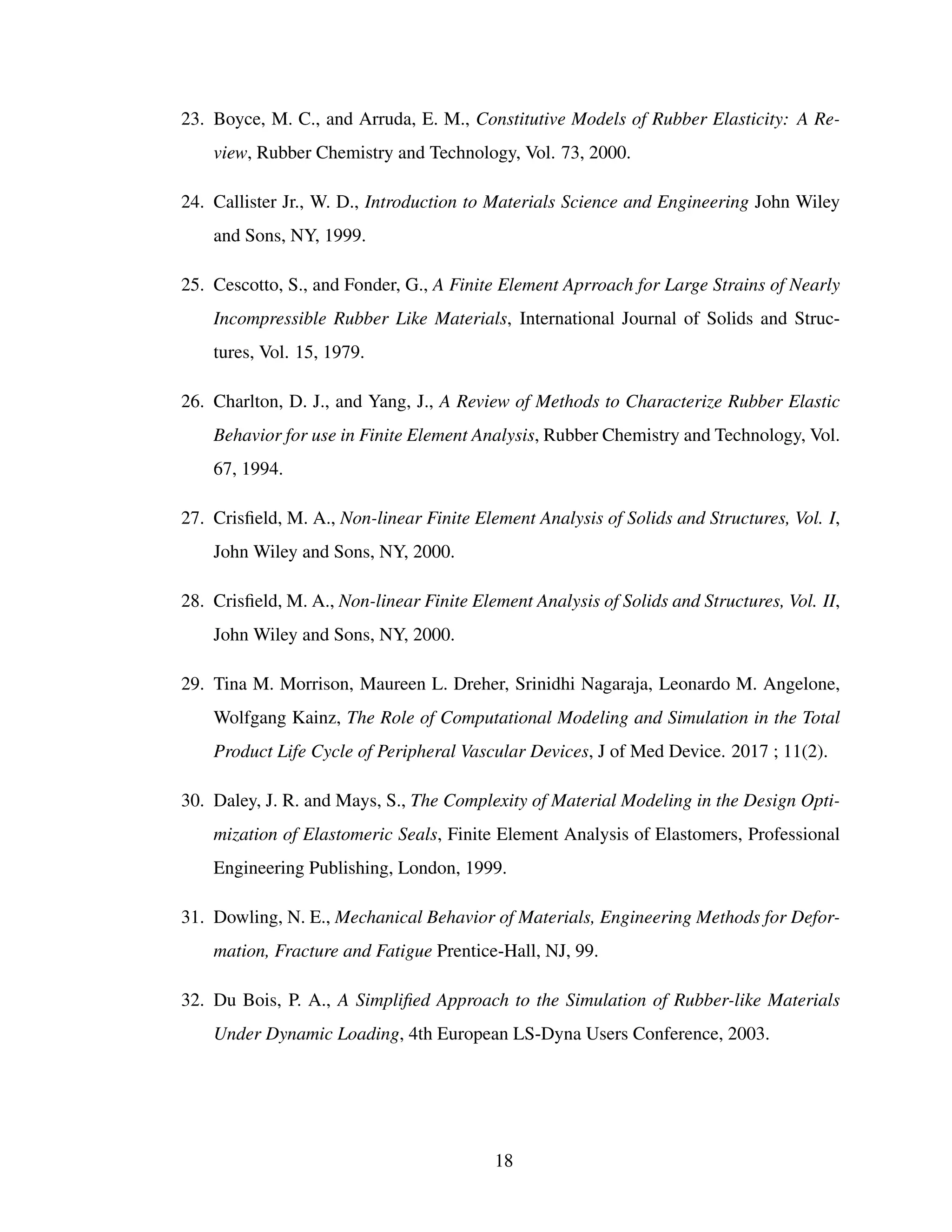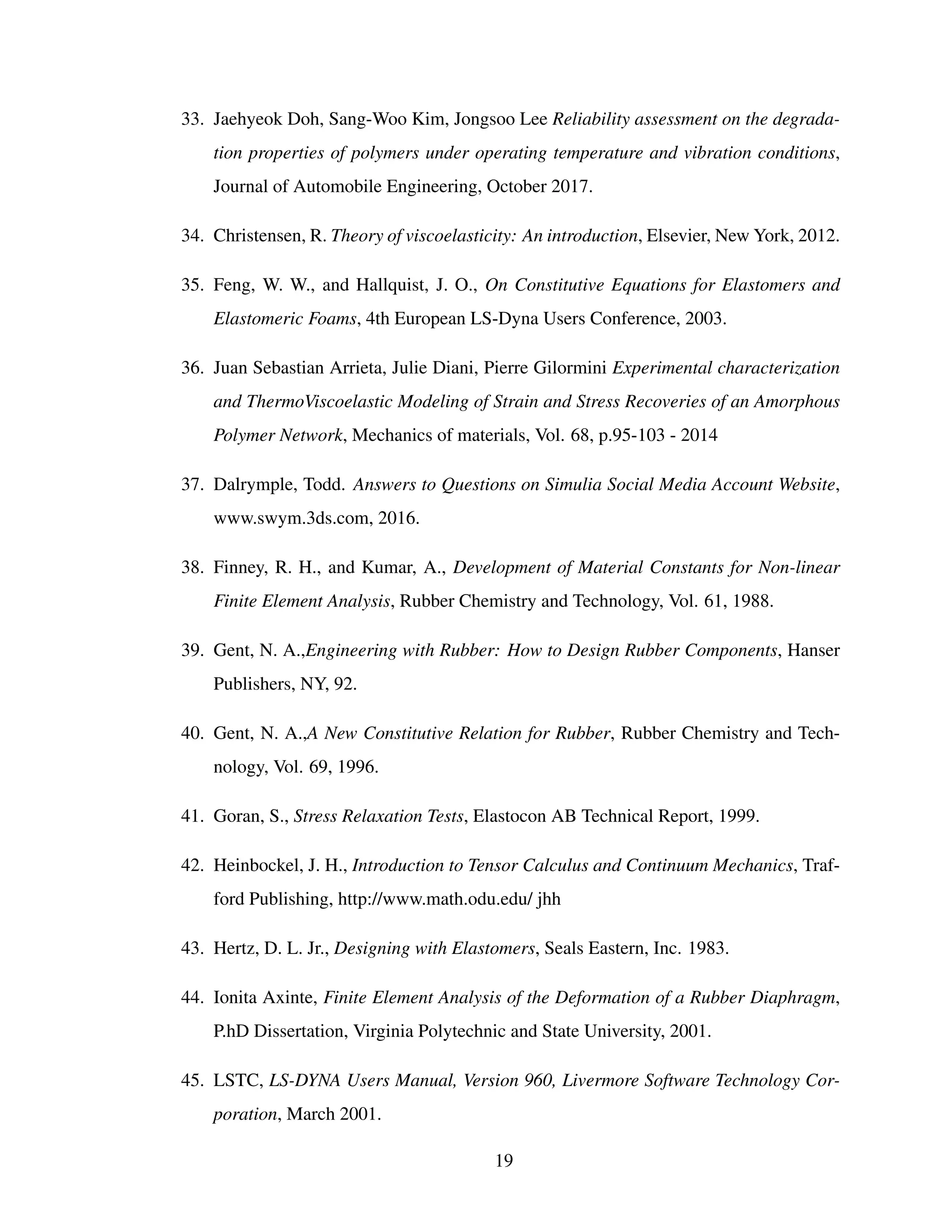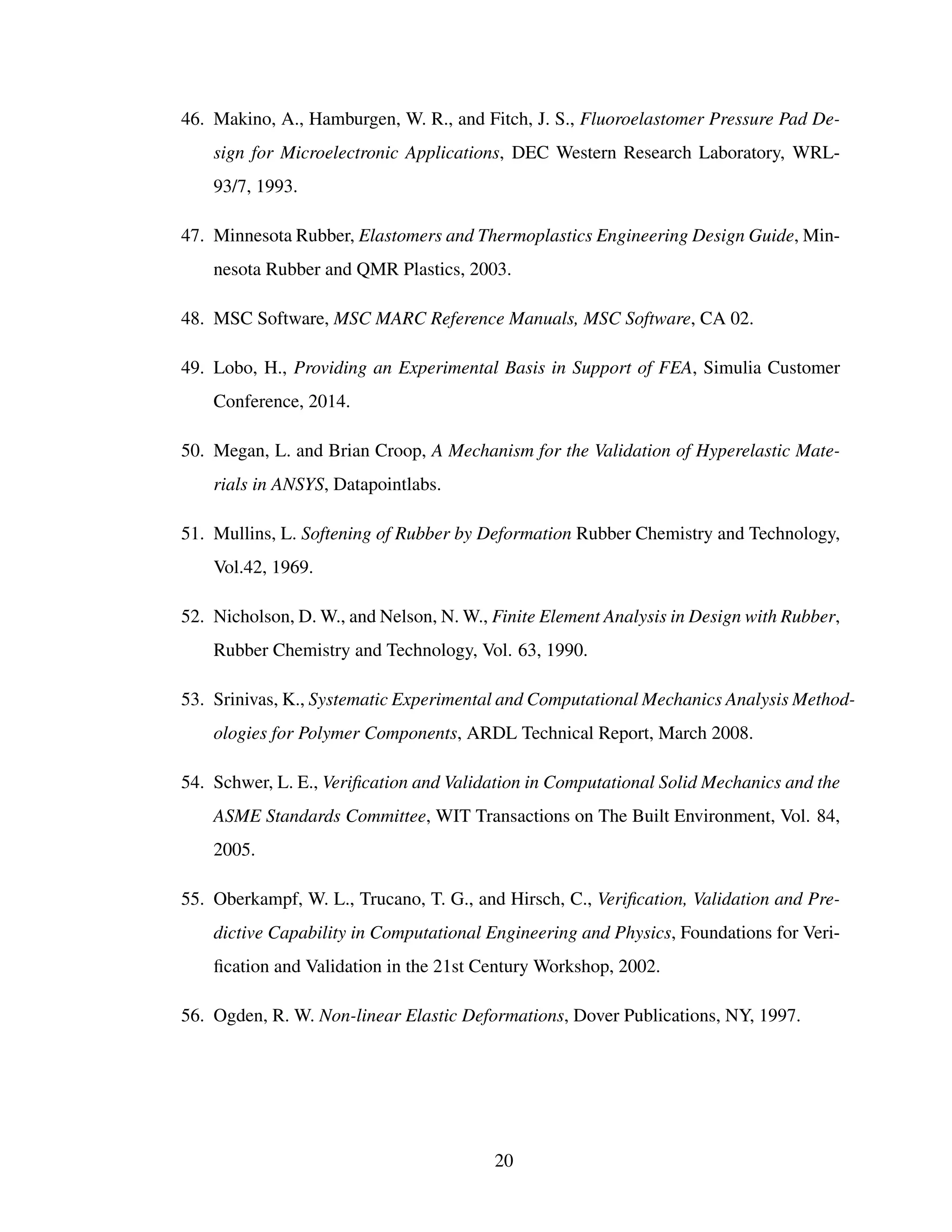The document discusses the processes of verification and validation in finite element analysis (FEA), emphasizing their importance in ensuring accuracy and reliability in computational models. It outlines the history of standards and guidelines, explains the verification and validation procedures, and emphasizes the need for ongoing iterative processes in the context of product development. The article concludes with a focus on how verification checks the software's accuracy while validation ensures the model reflects real-world behaviors.
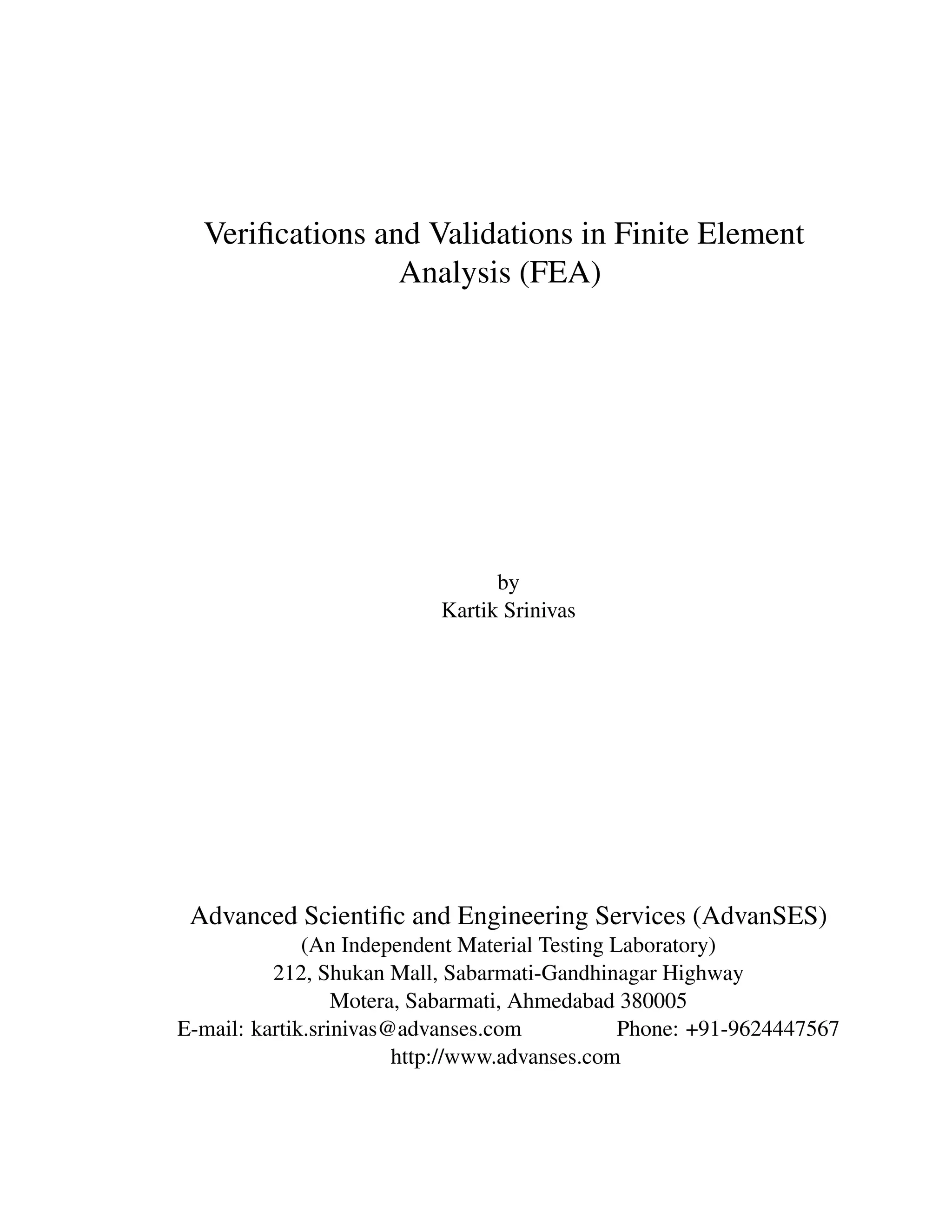

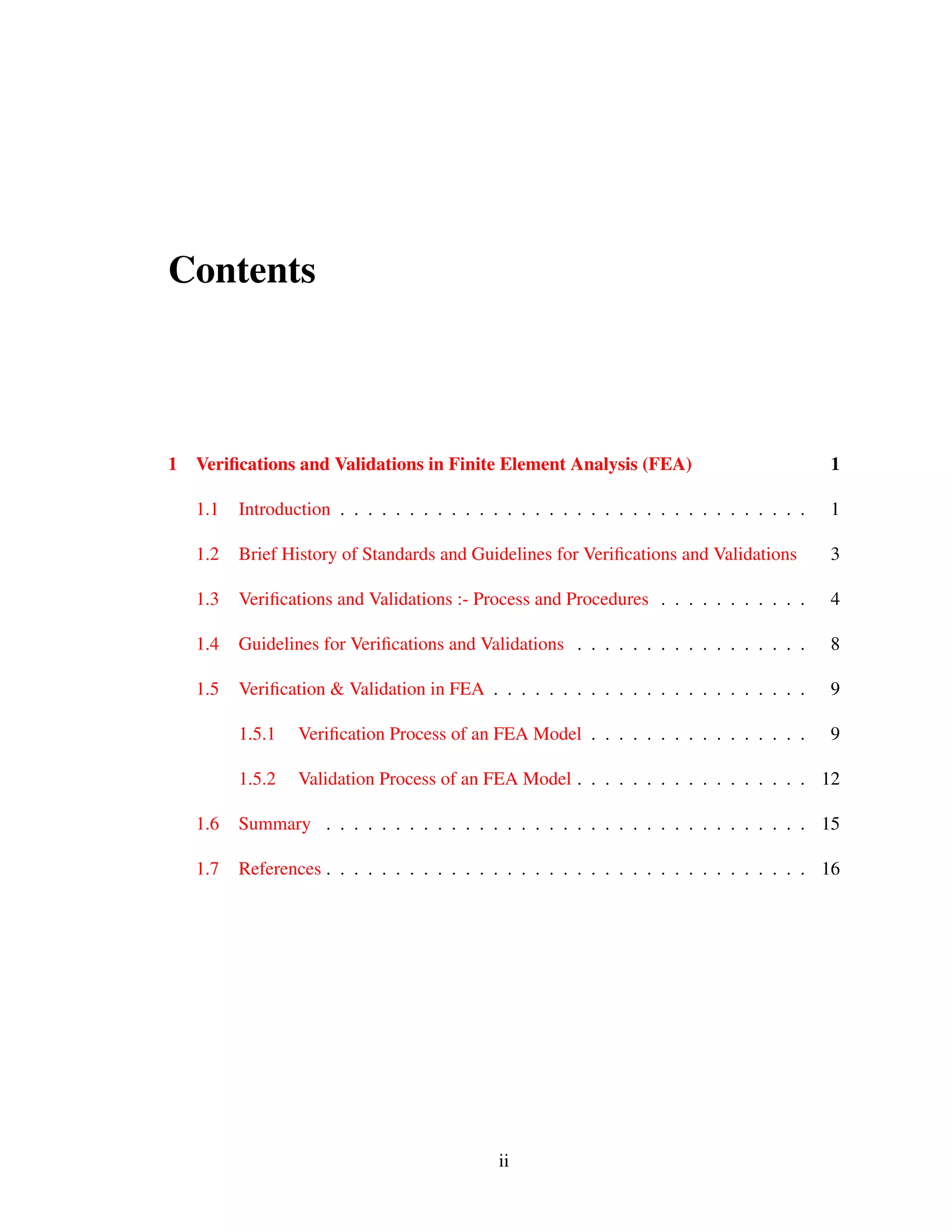

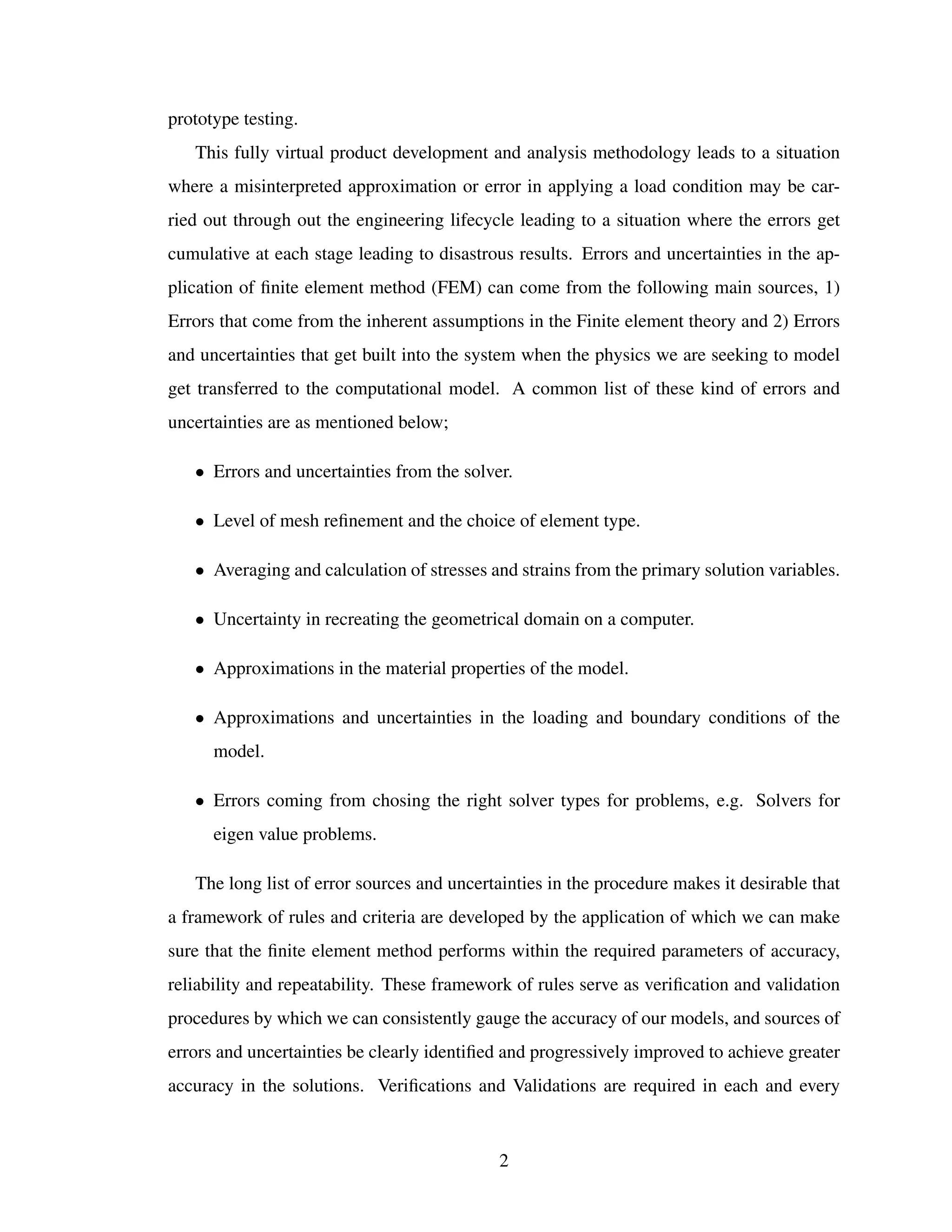
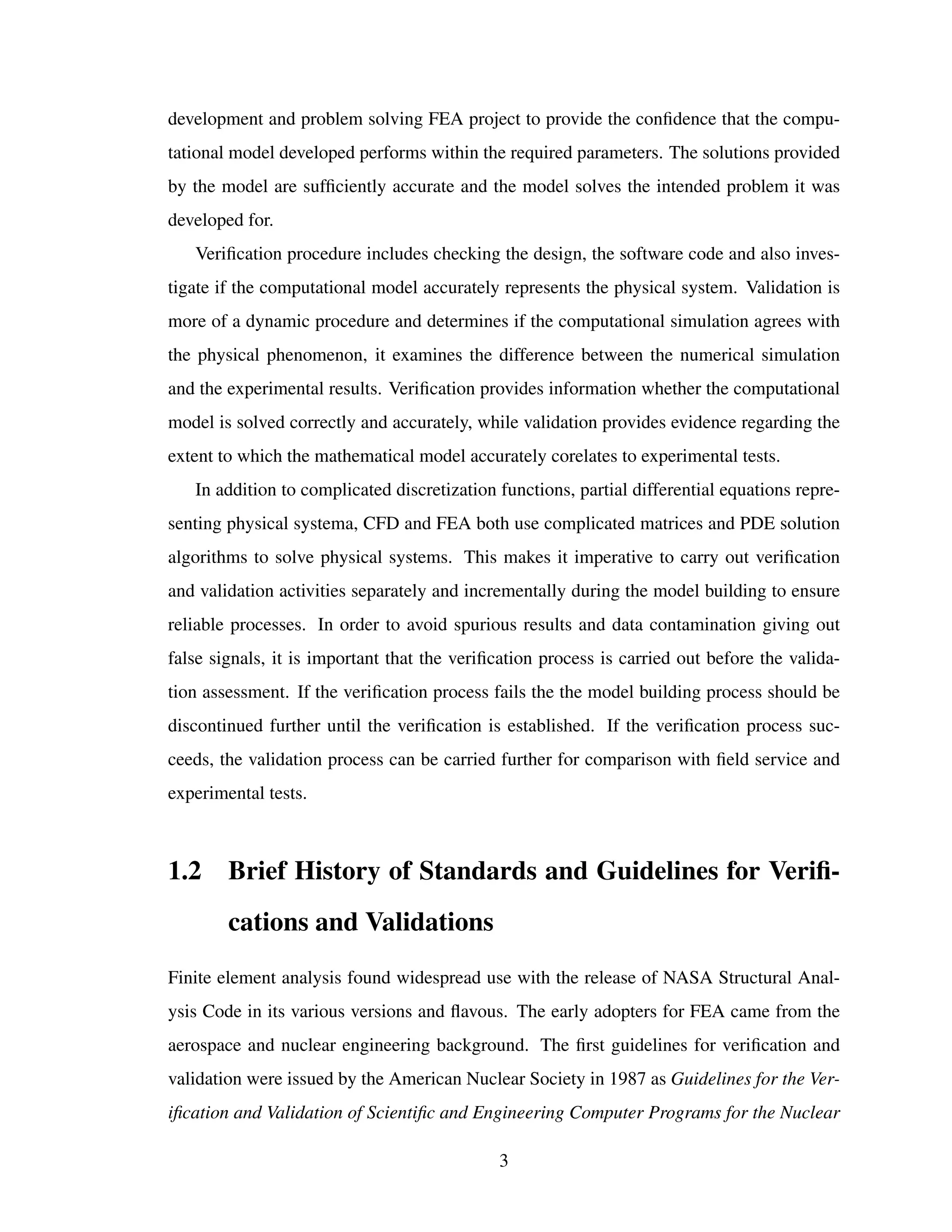
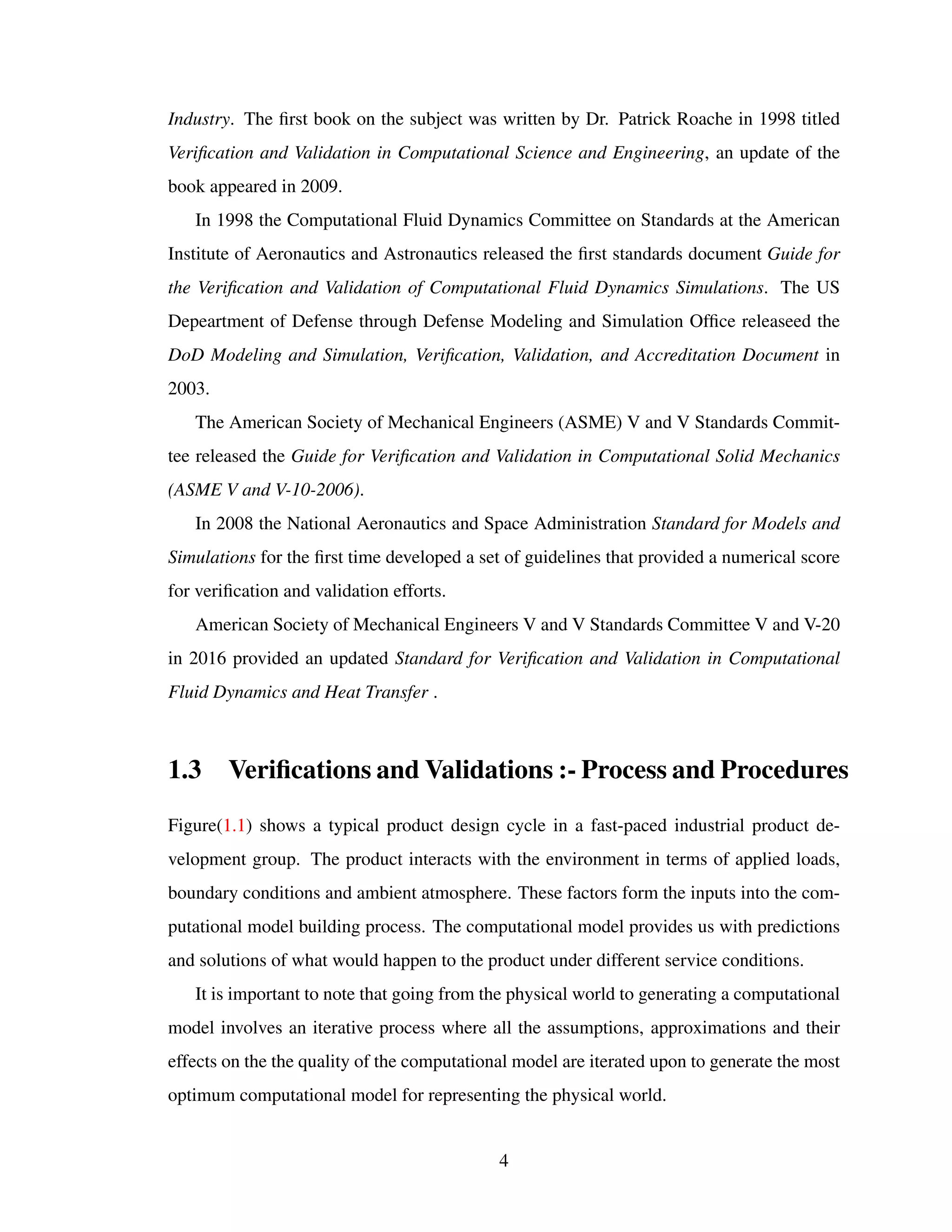
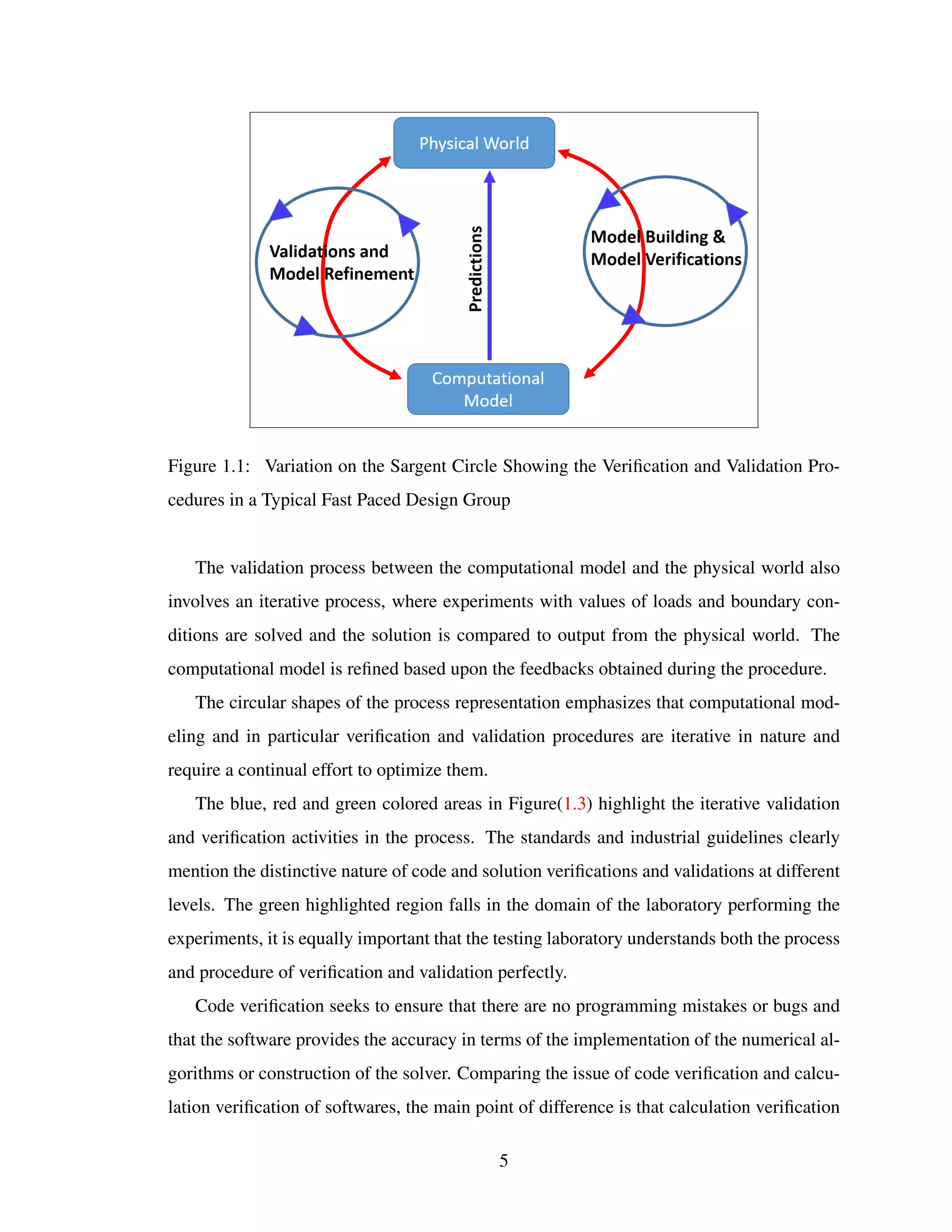

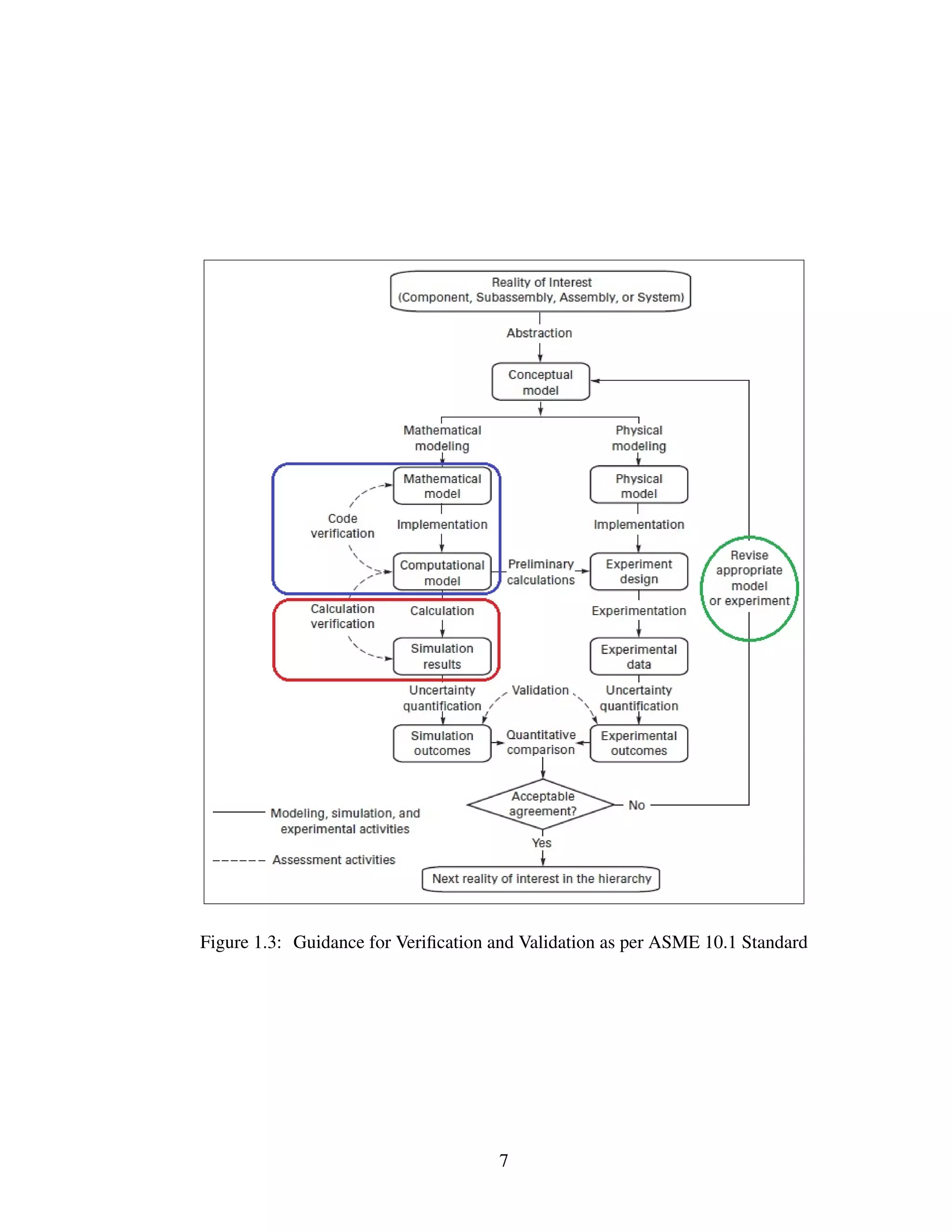
![1.4 Guidelines for Verifications and Validations
The first step is the verification of the code or software to confirm that the software is work-
ing as it was intended to do. The idea behind code verification is to identify and remove
any bugs that might have been generated while implementing the numerical algorithms or
because of any programming errors. Code verification is primarily a responsibility of the
code developer and softwares like Abaqus, LS-Dyna etc., provide example problems man-
uals, benchmark manuals to show the verifications of the procedures and algorithms they
have implemented.
Next step of calculation verification is carried out to quantify the error in a computer
simulation due to factors like mesh discretization, improper convergence criteria, approxi-
mation in material properties and model generations. Calculation verification provides with
an estimation of the error in the solution because of the mentioned factors. Experience has
shown us that insufficient mesh discretization is the primary culprit and largest contributor
to errors in calculation verification.
Validation processes for material models, elements, and numerical algorithms are gen-
erally part of FEA and CFD software help manuals. However, when it comes to estab-
lishing the validity of the computational model that one is seeking to solve, the validation
procedure has to be developed by the analyst or the engineering group.
The following validation guidelines were developed at Sandia National Labs[Oberkampf
et al.] by experimentalists working on wind tunnel programs, however these are applicable
to all problems from computational mechanics.
Guideline 1: The validation experiment should be jointly designed by the FEA group
and the experimental engineers. The experiments should ideally be designed so that the
validation domain falls inside the application domain.
Guideline 2: The designed experiment should involve the full physics of the system,
including the loading and boundary conditions.
Guideline 3: The solutions of the experiments and from the computational model
should be totally independent of each other.
Guideline 4: The experiments and the validation process should start from the system
8](https://image.slidesharecdn.com/verifications-validations-200606052433/75/Veri-cations-and-Validations-in-Finite-Element-Analysis-FEA-11-2048.jpg)
![level solution to the component level.
Guideline 5: Care should be taken that operator bias or process bias does not contami-
nate the solution or the validation process.
1.5 Verification & Validation in FEA
1.5.1 Verification Process of an FEA Model
In the case of automotive product development problems, verification of components like
silent blocks and bushings, torque rod bushes, spherical bearings etc., can be carried. Fig-
ure(1.4) shows the rubber-metal bonded component for which calculations have been car-
ried out. Hill[11], Horton[12] and have shown that under radial loads the stiffness of the
bushing can be given by,
Figure 1.4: Geometry Dimensions of the Silent Bushing
Krs = βrsLG (1.1)
where,βrs =
80π A2 +B2
25(A2 +B2)ln B
A −9(A2 −B2)
(1.2)
9](https://image.slidesharecdn.com/verifications-validations-200606052433/75/Veri-cations-and-Validations-in-Finite-Element-Analysis-FEA-12-2048.jpg)
